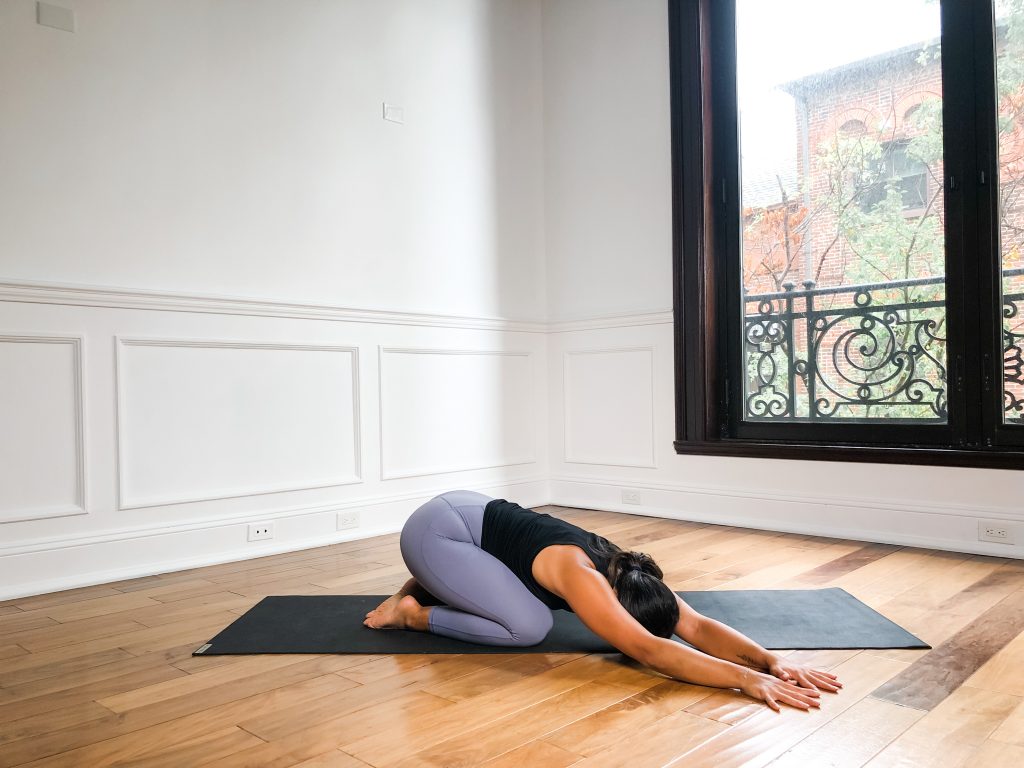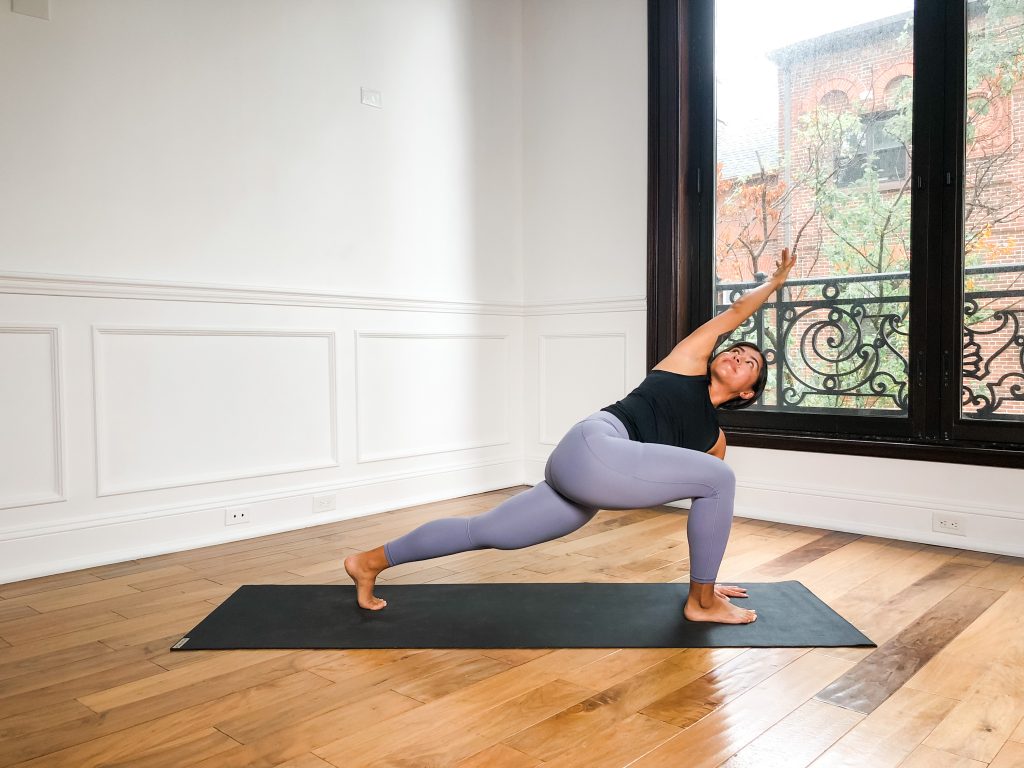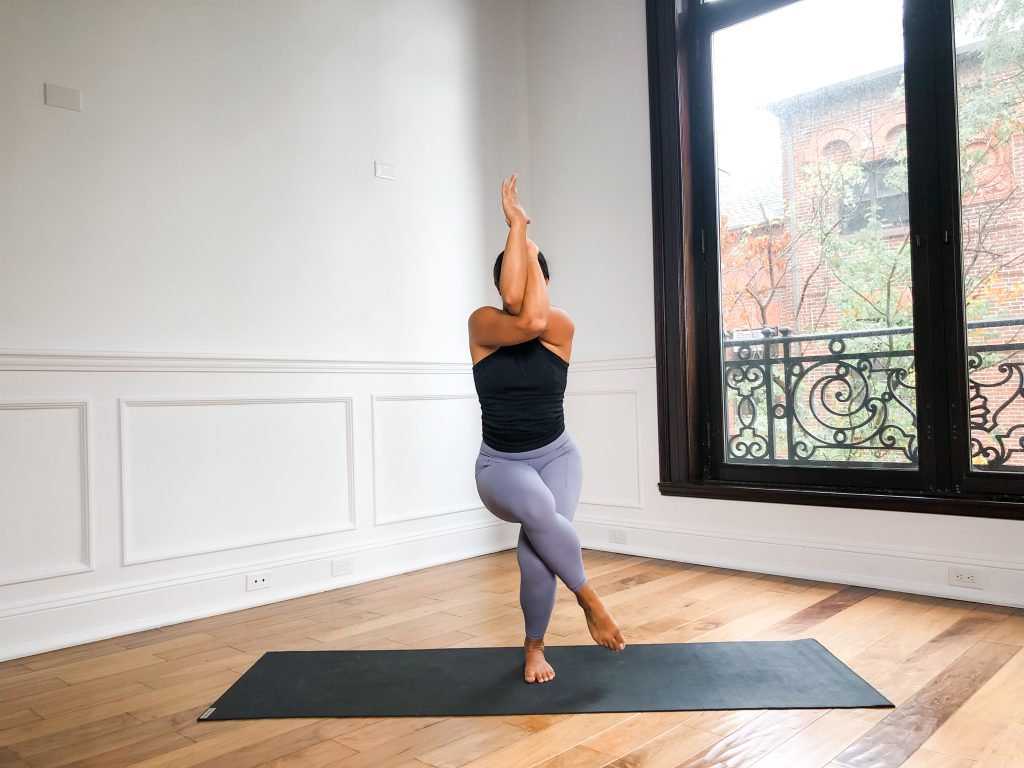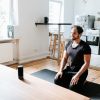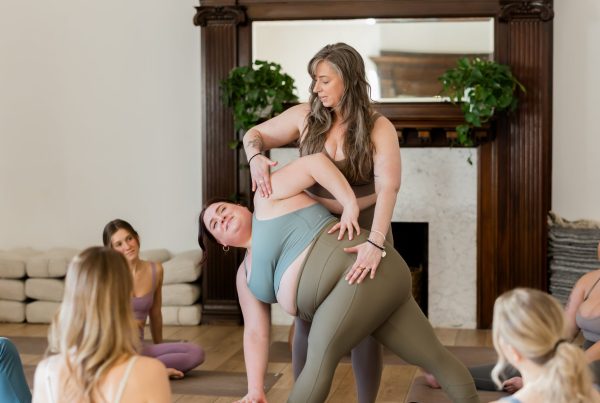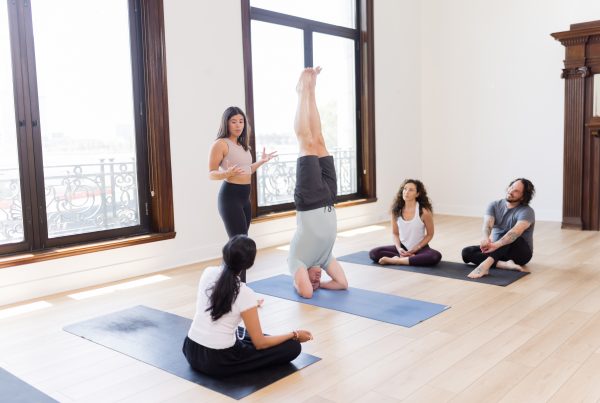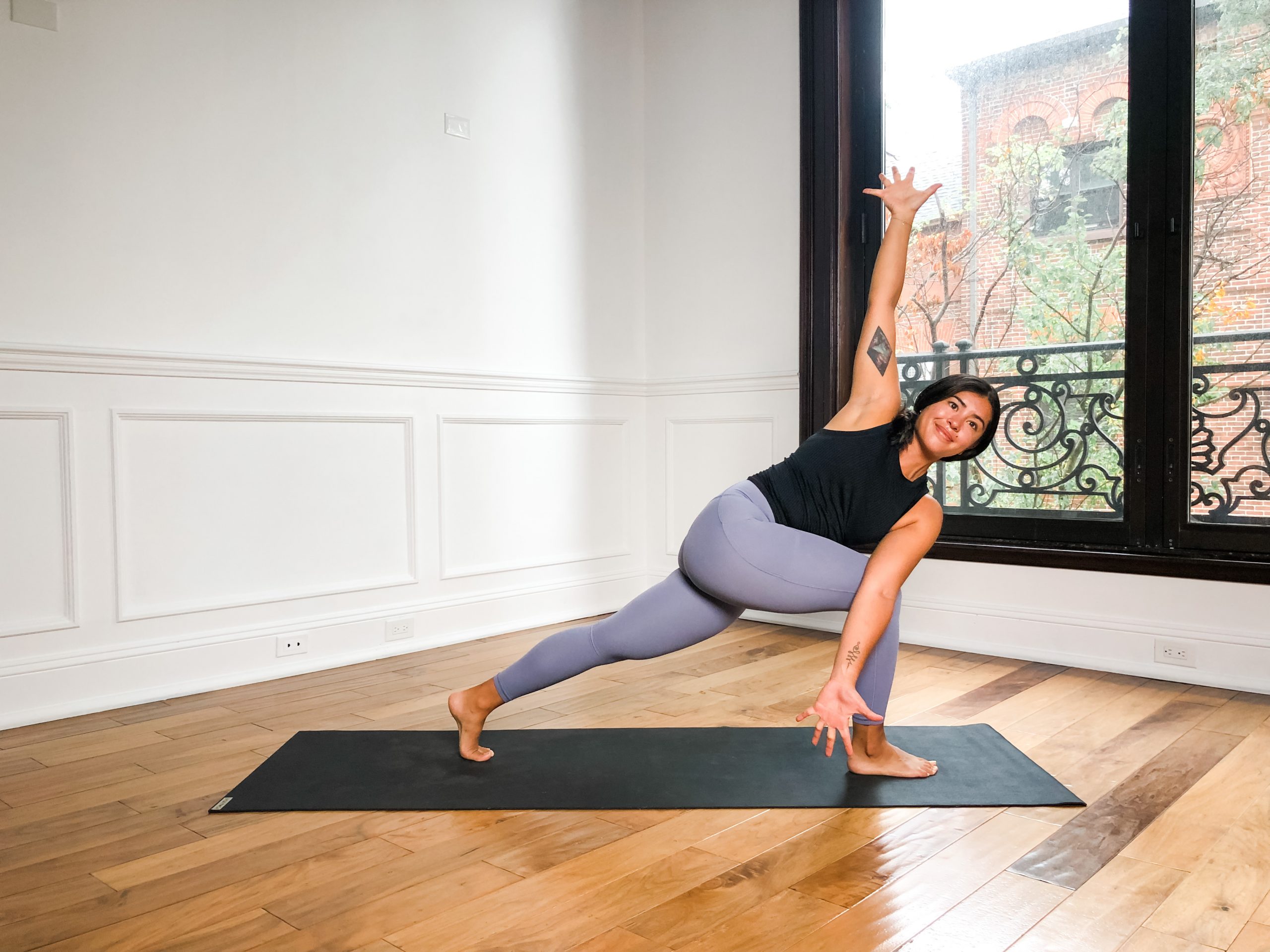
The Yamas + Niyamas make up the first two steps of the 8-limbed yogic path. You can think of the yamas as ethical rules to cultivate in our lives to live a more yogic life. These include non-violence, truthfulness, non-stealing, non-excess, and non-attachment. The niyamas are duties that should be tended to on the journey of spiritual enlightenment. These include purity, contentment, self-discipline, self-study, and surrender.
In this blog post we’ll briefly discuss the second niyama, santosha, meaning contentment. In the modern world we live in, it is SO EASY to feel discontent. We feel discontent when we see other people “living their best lives…” in quotations because what we see is not always what is true. Discontent arises when we run away from present moment emotions or pretend they do not exist…”Me? Sad? Absolutely not.” Discontent appears the moment we begin to complain about what we do not have and when we start to wish we lived entirely different lives…”My job sucks, my partner sucks, I SUCK. If only things were different.”
Social media, and the general connectivity of the human population, almost seems to pronounce our shortcomings. We are constantly put into a state of lack. There’s always something new and upcoming…there is always something that will make our lives better. This combined with the fact that we live in a world of accessibility, of course discontentment can take us if we let it!
I don’t know about you, but this is NOT something I would like to continue to subscribe to. So how do we pause, wipe our lens clear, and instead cultivate deep content with our lives no matter where we are and what our current situation is?
We could spend all day talking about this, but I am going to give the broad brush stroke of awareness + gratitude. Developing an awareness of when we begin to slip out of contentment…when we start to envy someone, when we begin to ruminate on past actions, or when we start to wish we were elsewhere…and then dosing ourselves with gratitude is what can help us transcend into santosha.
Gratitude is the antidote to discontentment. And a deep trust in that where we are is where we are meant to be. All past actions and experiences have led to this present moment. There is nothing to be changed, altered, or forced any other way. Grounding ourselves in each present moment, regardless of the circumstance, will guide us towards experiencing contentment in ourselves right now.
Peak Pose: Revolved Extended Side Angle (Parivrtta Utthita Parsvakonasana)
This pose is physically taxing and requires awareness and steadiness of one’s center and ground. While this pose may not look so intense to some, anyone who enters into it knows that it takes practice enter into this pose and hold it. Also don’t be surprised if you get knocked off center a few times while practicing!
Child’s Pose with Side Stretch (Balasana)
Creating length in the sides of the body gives more space for twists to occur. This pose also generates a connection between the torso and thigh, which appears in the peak pose.
How to:
- Come into child’s pose with the big toes touching and knees wide enough for the torso to fit through.
- Walk your hands over towards the right side of the room until you feel a stretch in the left side of your body.
- When your torso touches your thigh, pick up the torso a bit, walk the hands over a little more, and then resettle into the pose.
- You can have your hands next to one another, or lay your left hand on top of the right hand.
Low Lunge Twist
Doesn’t this look just like the peak pose?! This pose creates the shape of revolved extended side angle, but in a much more accessible way.
How to:
- Starting from low lunge with the back knee lifted, keep your left hand on the floor and take your right arm to the sky.
- Turn your belly and chest from left to right.
- Take your right palm forward and reach the arm over your ear.
- The bottom hand can rest on a block if one has trouble touching the ground.
Eagle Pose (Garudasana)
Eagle helps to compact the outer hips and steady oneself while the limbs cross. This is similar in our peak pose.
How to:
- Start in chair pose with the arms wide.
- Cross the right knee over the left knee, closing the space between the legs. Depending on leg length/circumference/mobility, you can single cross the legs (as pictured) or double cross the legs and wrap the right foot behind the left calf.
- Keep the outer hips compacted in as the hips remain low.
- Wrap the right arm underneath the left arm, lift the elbows to shoulder height, and take the fingertips to face the sky.
- Attempt to bring the palms together as your firm the outer shoulders in.
- Keep the crown of the head towards the sky.
Peak Pose: Revolved Extended Side Angle (Parivrtta Utthita Parsvakonasana)
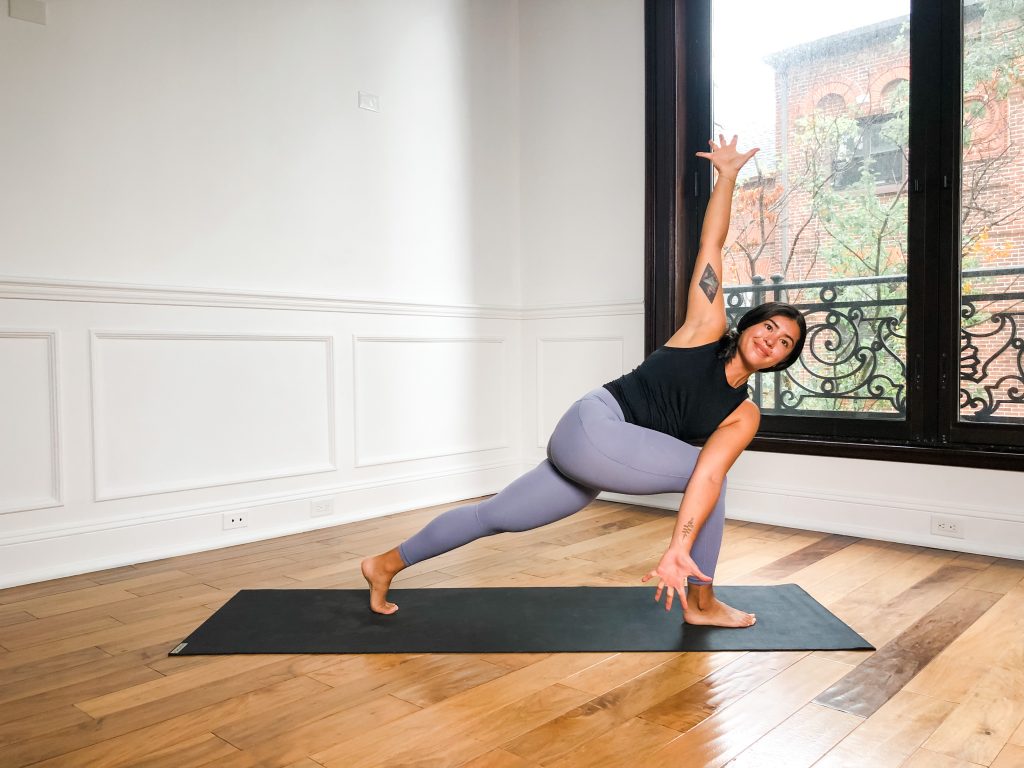
How to:
- Start in low lunge with the back knee on the floor.
- Bring the hands into a prayer position in front of the sternum.
- Twist the torso from left to right and hook the left elbow outside the right leg. Compacting the outer hips in will assist the deep twist. Once the hook is established, lift the back knee up.
- Draw the shoulder blades together to widen the arms from the floor to ceiling, and then take your right palm forward and scratch the arm over the ear.
- In the traditional Iyengar version, the back heel is lowered to the floor at an angle making this an even deeper twist!


